Using the Tire Mobility Kit when a tire is flat
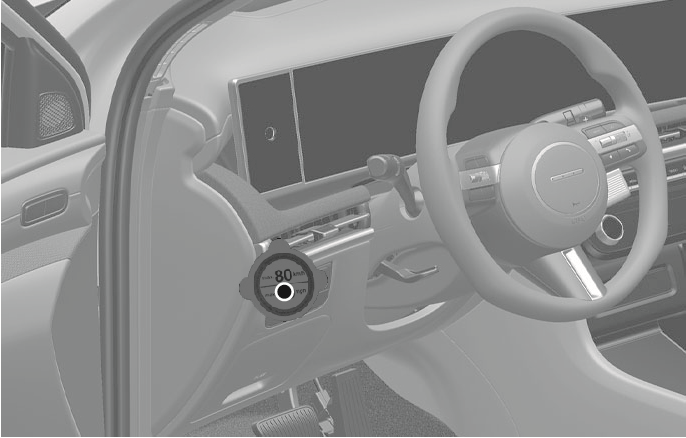
2C_HowToUseTMK
Detach the speed restriction label (1) from the compressor (6), and place it in a highly visible place inside the vehicle such as on the steering wheel to remind the driver not to drive too fast.
If only the tire pressure needs to be adjusted, refer to the "How to adjust tire pressure" section in this chapter.
Before using the Tire Mobility Kit, be fully aware of the explanation on the sealant.
-
Shake the sealant bottle (2).
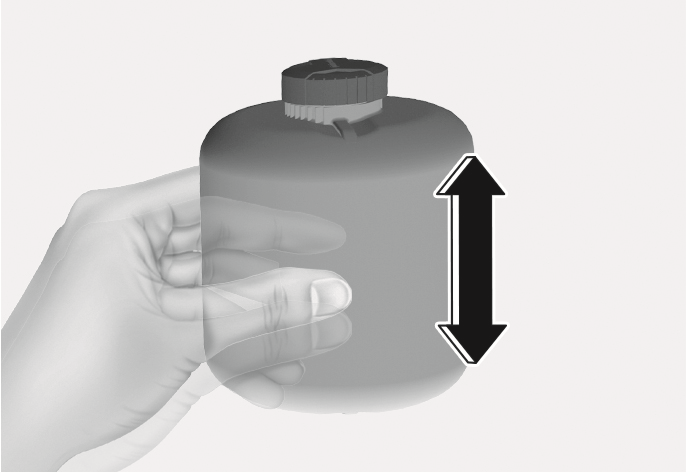
2C_TMKPrecedure
-
Remove the cover (A) of the sealant bottle (2) and compressor (6).
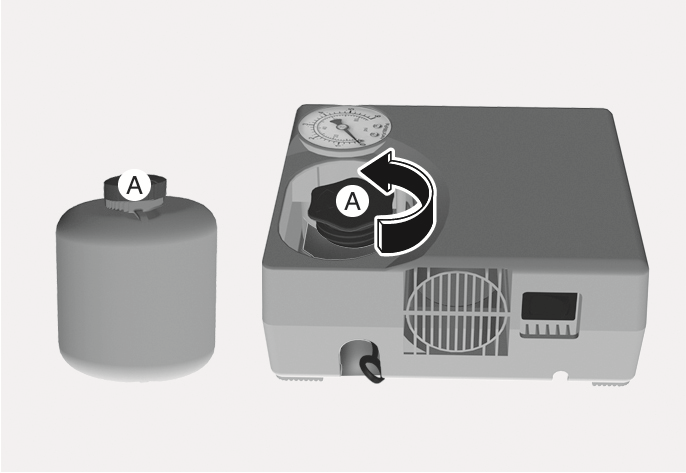
2C_TMKPrecedure_6
-
Unscrew the valve cap from the valve of the defective and screw the connection hose (3) of the compressor and tire.

2C_TMKPrecedure_3
Securely install the sealant filling hose to the valve. If not, sealant may flow backward, possibly clogging the filling hose.
-
Make sure the compressor turns off by pressing [O] of the main switch (7).
-
Connect the cable and connector (4) to the power outlet in the vehicle.
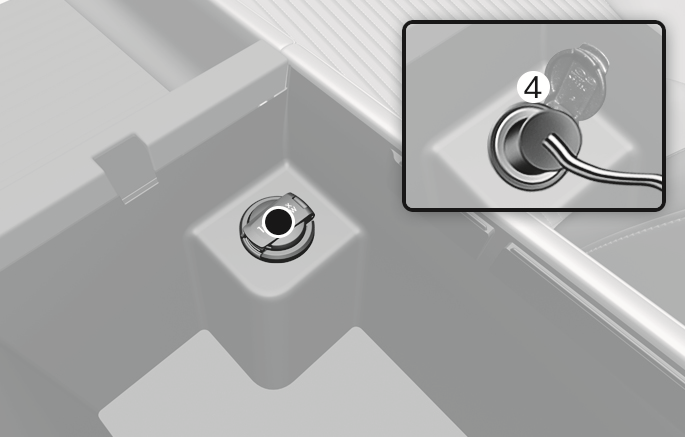
2C_TMKPrecedure_4
-
With the ignition switch ON, switch on the compressor and let it run for approximately 5~7 minutes to fill the sealant up to proper pressure. (refer to the "Tires and wheels" section in chapter 10). The inflation pressure of the tire after filling is unimportant and will be checked/corrected later.
Be careful not to overinflate the tire and stay away from the tire when filling it.
Do not attempt to drive your vehicle if the tire pressure is below 29 psi (200 kPa). This could result in a crash due to sudden tire failure.
-
Switch off the compressor.
-
Detach the hoses from the sealant bottle connector and from the tire valve.
Return the Tire Mobility Kit to its storage location in the vehicle.
Do not leave your engine running in a poorly ventilated area for extended periods of time. Carbon monoxide poisoning and suffocation can occur.
-
Immediately drive about 4-6 mi. (7-10 km or about 10 minutes) to evenly distribute the sealant in the tire.
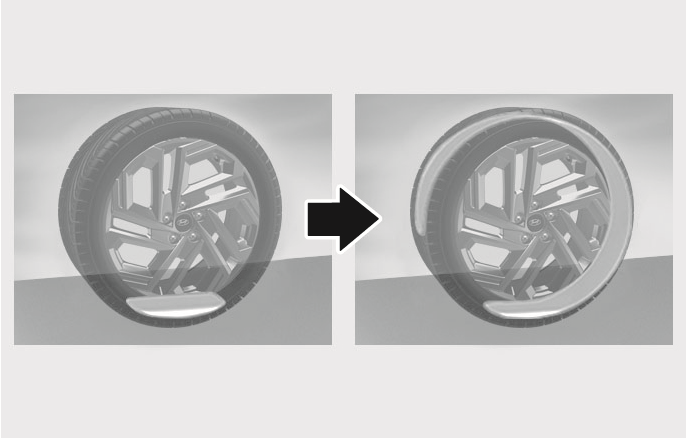
2C_TMKPrecedure_5
Do not exceed a speed of 50 mph (80 km/h). If possible, do not fall below a speed of 12 mph (20 km/h).
While driving, if you experience any unusual vibration, ride disturbance or noise, reduce your speed and drive with caution until you can safely pull off of the side of the road.
Call for road side service or towing.
-
After driving about 4-6 mi. (7-10 km or about 10 minutes), stop at a safety location.
-
Connect the connection hose (3) of the compressor and tire into the tire valve.

2C_TMKPrecedure_3
-
Connect cables (4) to the power outlet.
-
Adjust the tire inflation pressure to the recommended tire inflation.
With the engine running, proceed as follows:
-
To increase the inflation pressure: Switch on the compressor. To check the current inflation pressure setting, briefly switch off the compressor.
-
To reduce the inflation pressure: Press the button (9) on the compressor.
-
Do not let the compressor run for more than 10 minutes, otherwise the device may overheat and may be damaged.
The pressure gauge may show higher than actual reading when the compressor is running. To get an accurate tire pressure, the compressor needs to be turned off.
-
If the tire inflation pressure is not maintained, drive the vehicle a second time, refer to step 9. Then repeat steps 10 to 13.
-
Use of the Tire Mobility Kit may not be effective for tire damage larger than about 0.16 in. (4 mm).
Contact an authorized HYUNDAI dealer if the tire cannot be made roadworthy with the Tire Mobility Kit.
The tire inflation pressure must be inflated to the proper pressure, refer to the "Tires and wheels" section of the complete Owner's Manual. If it is not inflated, do not continue to drive.
The tire inflation pressure must be inflated to the proper pressure, refer to the "Tires and Wheels" section in chapter 10 of the complete Owner's Manual. If it is not inflated, do not continue to drive.
Call for road side service or towing.
Tire pressure sensor
The sealant on the tire pressure sensor and wheel should be removed when you replace the tire with a new one and inspect the tire pressure sensors. Have this done at an authorized HYUNDAI dealer.
When reinstalling the repaired or replaced tire and wheel on the vehicle, tighten the wheel nut to 79-94 lbf·ft (11-13 kgf·m).